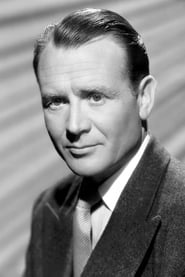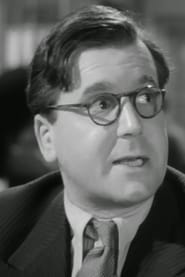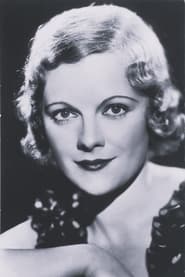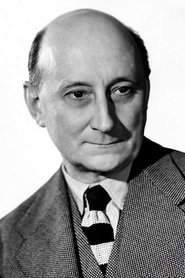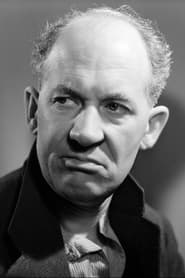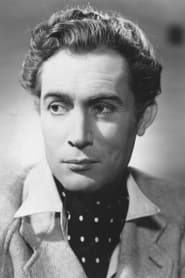Cast
View AllJohn Mills
as Jim Ackland
Joan Greenwood
as Jenny Carden
Edward Chapman
as Mr. Peachy
Kay Walsh
as Molly Newman
Joyce Carey
as Mrs. Vinton
Catherine Lacey
as Miss Selby
Adrianne Allen
as Joyce Carden
Felix Aylmer
as Dr. Martin
Frederick Piper
as Det. Insp. Godby
John Boxer
as Det. Sgt. Troth
Patrick Holt
as Harry Carden
George Benson
as Mr. Pope
Jack Melford
as Wilcox
Esme Beringer
as Miss Heap
Ann Wilton
as Miss Parsons
Crew
Director
- Roy Ward Baker
Reviews
John Chard
Astrology Amnesia.
The October Man is directed by Roy Ward Baker and written by Eric Ambler. It stars John Mills, Joan Greenwood, Edward Chapman, Kay Walsh, Joyce Carey, Catherine Lacey, Adrianne Allen and Felix Aylmer. Music is by William Alwyn and cinematography by Erwin Hillier.
Following a bus crash that killed a friends child that he was treating to a day out, Jim Ackland (Mills) suffers a brain injury. During his recuperation it’s revealed to him that he is prone to amnesia, and even though he’s suicidal over the child’s death, he’s released back into society. Setting up lodgings at a hotel and back to work as an industrial chemist, Jim is functioning well. That is until he financially helps one of the young lady residents of the hotel and becomes the chief suspect when she winds up murdered in a park. Jim has no recollection of committing the crime, but he was in the park…
Pulsing with moody atmospherics, this Brit noir – psychological - thriller showcases the best of John Mills and the higher end of the British noir splinter. It’s a post war London that’s cloaked in shadowy streets, of parks harbouring spectral mists punctured by bulbous lamps, a train station a foreboding but visually stunning presence. Jim Ackland is suicidal and nursing amnesia, yet the hotel where he lives, itself a relic of a London that time forgot, is full of human beings from different ends of the evolutionary scale. It’s not a good place for Jim to be, a cuckoos nest of spiteful, suspicious, vengeful, lonely people, Jim in fact, in spite of his problems, appears to be the only sane one there!
There is no great “whodunit” to be solved here, some critics have bizarrely complained that the murderer is too obvious! Bizarre because the makers don’t try and hide who it is, the film is firmly interested in the human condition, in how members of society react post a heinous crime, and of course how the afflicted antagonist fights his corner when confronted by hostility and his own mental confusion. Roy Ward Baker, for what was his first direction assignment, is more than up for the job of crafting a noir thriller. He has a good eye for the visual traits that often marry up with human feelings or behaviour, of course having someone of Hillier’s class on cinematography duty naturally helps him through his debut production.
Splendid entertainment. 8/10
Apr 6, 2014
CinemaSerf
I'm not the greatest fan of John Mills, but he is pretty good in this superior crime thriller. He is involved in a motor accident and many years later is still suffering from after effects when, whilst staying at an hotel, he becomes involved in the investigation of the murder of a fellow resident who is killed after she went out on a foggy London night to post a letter. He has no alibi, and his memories are inconsistent so the police begin suspect him of the crime. Can he do some detective work of his own to find the real killer? The story is pretty formulaic, but there are a few good (short) contributions from Joan Greenwood and Kay Walsh to supply us with enough red herrings to keep it interesting until, I have to say, a really pretty lightweight conclusion. Still, Roy Baker manages to keep the story intriguing enough to carry 90 minutes and I did quite enjoy it.
Jul 7, 2022
Thematic Analysis
The October Man represents a fascinating example of Mystery/Thriller cinema, offering viewers a unique perspective on the human experience and societal structures. The film's approach to its themes demonstrates a creative vision that distinguishes it within its genre.
Director Roy Ward Baker brings their distinctive visual style to this film, continuing their exploration of themes seen in their previous works while adding new elements. Their approach to pacing and visual storytelling creates a viewing experience that rewards close attention.
Released in 1947, the film exists within a cultural context that now offers viewers historical perspective on the social issues of that era. Its reception demonstrates the diverse reactions to its artistic choices and its place in cinema history.
Did You Know?
- The production of The October Man took approximately 28 months from pre-production to final cut.
- The final cut of the film runs for 95 minutes, though the director's initial assembly was reportedly 115 minutes long.
- The costume department created over 141 unique costume pieces for the production.
- The film contains approximately 1696 individual shots.
- The musical score contains over 60 unique compositions.
Historical Context
- In 1947, when this film was released:
- Rock and roll music was revolutionizing popular culture.
- The Cold War was intensifying, influencing global politics and culture.
- The film industry was dominated by major studios, with independent cinema still in its early development.
How This Film Stands Out
While The October Man shares thematic elements with other films in its genre, it distinguishes itself through its unique approach to storytelling, visual style, and character development.
Unlike Vanilla Sky, which focuses more on action than character development, The October Man subverts genre expectations by exploring its themes with greater nuance.
While films like Crime of Passion and Twin Peaks: Fire Walk with Me explore similar territory, The October Man stands apart through its distinctive directorial vision and pacing.
This film's unique contribution to cinema lies in its bold artistic choices and willingness to challenge viewer expectations, making it a valuable addition to its genre.
Details
- Release Date: August 28, 1947
- Runtime: 1h 35m



